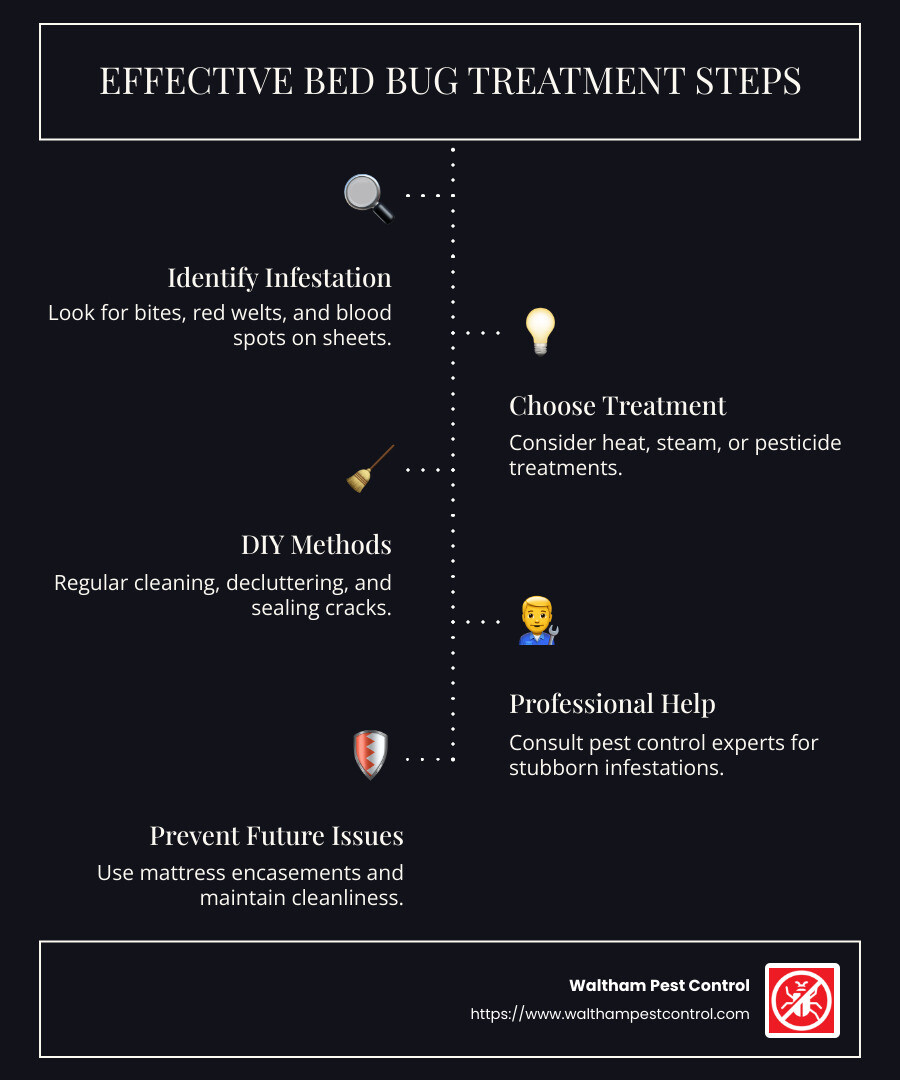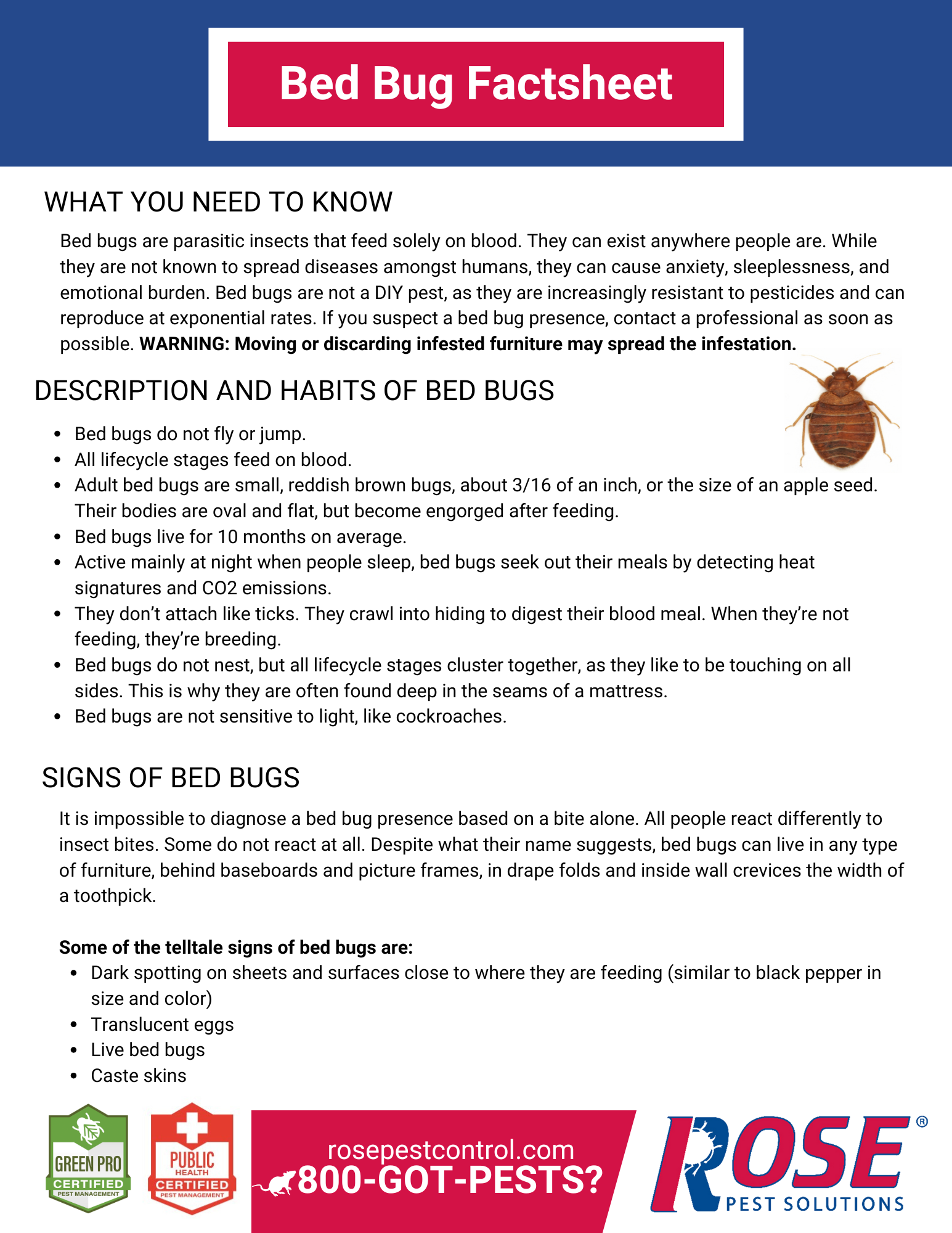The Ultimate Guide To Bed Bug Services
Table of ContentsBed Bug Services for DummiesBed Bug Services Things To Know Before You Get ThisBed Bug Services Can Be Fun For EveryoneUnknown Facts About Bed Bug ServicesNot known Factual Statements About Bed Bug Services Bed Bug Services - Truths
Bed pests are very tiny and very intrusive, which indicates they can conveniently infest different locations inside your home unseen. It's only when the issue is serious that you start to notice the issue. Bed Bug Services. That is why and entails several actions, including: Dusting and spraying under baseboards, including the area where the walls fulfill the floorThis will add an additional layer of protection for your inside area to guarantee no bed insects transfer to other rooms. Professionals will have you remove any soft items from the plagued areas to toss in the dryer on high warmth for 30 mins to kill any remaining bed pests on them.
After the therapy, the specialists will. This follow-up see involves completely checking and inspecting the treated locations again to guarantee the problem has actually been looked after. If the pest control professionals see that there are still a couple of bed pests left, they will reapply the treatment as needed.
9 Simple Techniques For Bed Bug Services
This service involves a detailed assessment of your home and applying therapies to infested locations in your indoor area. It additionally includes a follow-up assessment after 2 weeks to guarantee the problem is gone.
A professional bed bug inspection begins with a careful evaluation of the environment. Experts know how to spot infestations that are not immediately visible. The inspection follows a structured approach to ensure reliable detection.
Inspectors first focus on areas where bed bugs are likely to reside. Areas often inspected include bed frames, furniture joints, and bedding crevices. Technicians often check behind wall art, you can find out more trim, and outlets for hiding bugs.
The Ultimate Guide To Bed Bug Services
Trained inspectors typically begin with a visual inspection. Inspectors search for live bugs, molted skins, eggs, and fecal spots. Spotting subtle signs helps catch infestations early.
Alongside visual inspection, many professionals employ advanced tools. Magnifying tools and inspection mirrors help in examining difficult-to-reach spots. Traps and monitoring devices help detect and follow ongoing infestations.

Detection dogs are sometimes used to identify infestations quickly. Canines are trained to sniff out active bed bug populations in hidden spots. Using canines improves efficiency and reduces the chances of missed infestations.
Some Of Bed Bug Services
Residents may need to follow preparation steps to assist the inspection. Residents should move furniture and store bedding to allow a clear view of potential hiding places. Technicians need access to common bed bug hiding spots for thorough assessment.
Beds and couches are inspected in detail to uncover hidden insects - Bed Bug Services. Inspectors move furniture and check beneath items for signs of bugs. Hidden spaces such as behind outlets, frames, and wall trim are checked

Some Known Questions About Bed Bug Services.
After the initial inspection, professionals may recommend a monitoring or follow-up plan. This may include placing interceptors, sticky traps, or using continuous monitoring tools. Household members sites may assist by tracking potential pest activity. Continuous tracking and client involvement help maintain control.
Multi-unit buildings and shared living spaces require thorough inspections. Inspectors check adjacent units and shared spaces to prevent spread. A full-property inspection ensures no areas are overlooked.
Clients receive a thorough plan for addressing detected infestations. This may include treatment options, preventive measures, and ongoing monitoring. Following professional advice increases the likelihood of complete eradication.
The smart Trick of Bed Bug Services That Nobody is Discussing
The process includes assessing the environment, examining potential hiding spots, employing detection methods, tracking activity, documenting findings, and providing a treatment plan. These steps ensure accurate detection, early intervention, and effective management. Engaging a trained inspector is the most reliable way to confirm the presence of bed bugs and implement effective solutions.